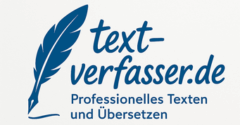German translation agency for professional texts
If you want to have a text translated into German, you’ll either need a translator or the assistance of translation tools. In the former case, you’ll usually work with a native German translator who operates on a professional level. In the latter case, the translation is generated through pre-defined algorithms. However, there are several ways you can have a text translated into German.
The German Language
The German language, renowned for its structure, precision, and cultural depth, serves as a captivating example of the diversity of human communication. As one of the most spoken languages in Europe, German boasts a rich history and influences various domains such as literature, philosophy, science, and technology.
Beyond being a mere means of communication, it also reflects a rich culture spanning from music and art to technology and innovation. It demonstrates how language can unite identity, history, and creativity, while simultaneously building bridges between different countries and regions.
In a globalized world, German remains a strong connection among individuals from diverse backgrounds, symbolizing the cultural and entrepreneurial diversity that enriches our world. This is particularly advantageous in economic, scientific, and technological fields where clear communication is of paramount importance.
7 Steps to a German Translation
- Online Translators: Numerous online translation tools like Google Translate, DeepL, or Linguee can automatically translate texts from one language to another. You simply enter or upload the text, select the source and target languages, and the tool provides a translation. However, be aware that machine translations might not always be perfect and could miss nuances in the language.
- Professional Translators: For important or complex texts, it’s advisable to enlist the services of a professional translator. Translators specializing in German can meticulously and accurately translate the text into the desired language. This is particularly crucial for business documents, academic work, or literary texts.
- Language Learning Apps: Some language learning apps also offer translation features. These can be useful for translating basic texts or checking vocabulary. You enter the text, and the app provides you with the translation as well as pronunciation and grammar tips.
- Dictionaries: Online or physical dictionaries can also be helpful for translating words and phrases. They often offer contextual examples and grammatical information that can assist you in using the translations correctly.
- Translation Agencies: For businesses looking to introduce products or services to the German market, collaborating with an agency might be beneficial. These agencies not only adapt the text to linguistic and cultural specifics but also ensure the message is appropriately conveyed.
- Social Media and Forums: Online forums and social media frequently host communities of language learners and native speakers willing to help with translation queries. However, the quality of assistance can vary.
- Self-Study: If you already possess advanced German skills, you could attempt to translate the text yourself. This might require some research to understand the exact meaning and nuances of expressions.
Nevertheless, when using automatic translation tools, there’s always a certain risk of inaccuracies. Especially for complex or culturally sensitive content, machine translations might be inappropriate or erroneous. When accuracy is crucial, it’s advisable to consult a human translator.
How to Approach Writing a Text in German
Creating texts in German can be an exciting endeavor. The German language boasts a rich history and culture that is reflected in its diversity and elegance. As with any text endeavor, there are a few steps you can take to help you craft a successful text in German:
- Choose a Topic: Select a topic that interests you and that you’re familiar with. This can range from travel to culture to personal experiences.
- Create an Outline: Before you start writing, establish a clear outline. This will help you organize your thoughts and structure the text coherently. A typical outline includes an introduction, main body, and conclusion.
- Collect Vocabulary and Expressions: Gather relevant vocabulary, phrases, and idioms related to your chosen topic. This expands your vocabulary and lends authenticity to your text.
- Introduction: Begin with an introductory passage that introduces the topic and captures the reader’s interest. You could ask a question, share a brief anecdote, or present an intriguing fact.
- Main Body: The main body contains detailed information, arguments, or stories that support your topic. Divide your arguments or ideas into paragraphs and ensure clear transitions between sections.
- Use Linking Words: German texts benefit from well-placed linking words like „außerdem“ (furthermore), „folglich“ (consequently), „jedoch“ (however), etc. These provide coherence and flow to your text.
- Include Examples: Add examples to illustrate your arguments. This makes your text more vivid and persuasive.
- Personal Opinion: If appropriate, you can also share your personal opinion or experiences. Use expressions like „meiner Meinung nach“ (in my opinion) or „ich glaube, dass“ (I believe that).
- Conclusion: Summarize the main points of your text and draw a conclusion. A successful conclusion rounds off your text and leaves a lasting impression.
Writing a text in German requires planning, preparation, and practice. With dedication and patience, you can enhance your writing skills and delve into the captivating world of the German language.
